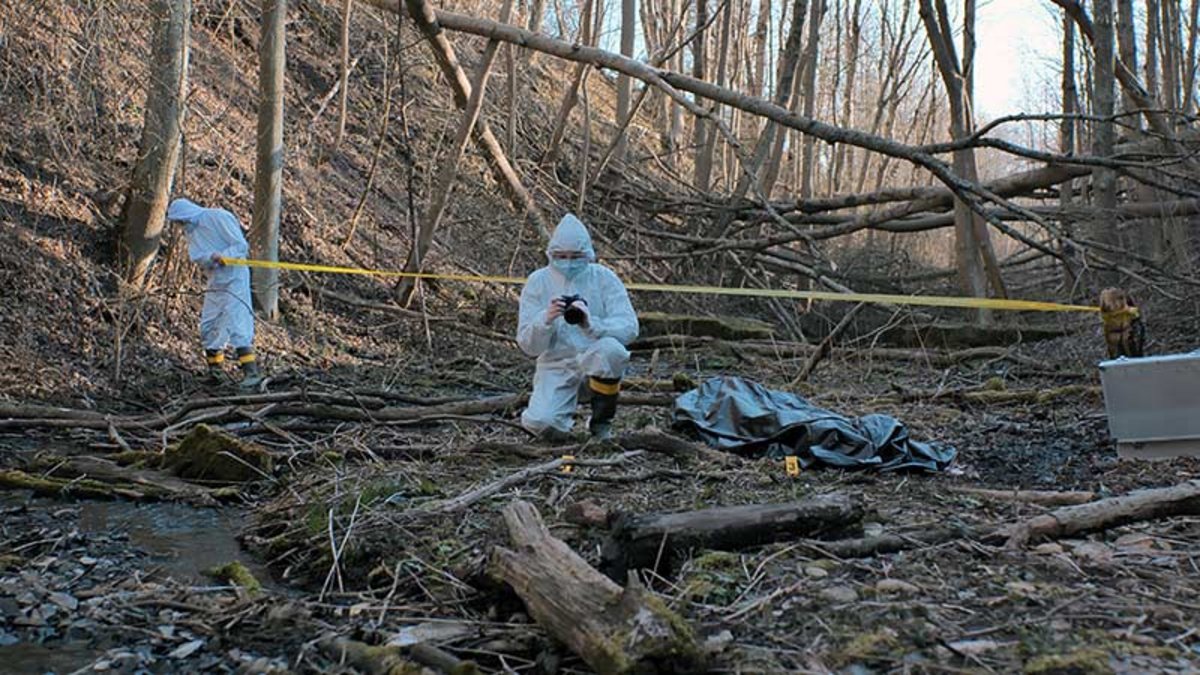Identifying uncovered bones
Categories : Développement territorial Attractivité du territoire
paru le 04-26-2022 (15:29) - Updated on 10-29-2024 (15:57)

It’s an often pressing question, asked almost weekly by the courts to the forensic taphonomy and anatomy unit (UTMLA¹): are these new bones collected by the police during a chance discovery or development work human?And how old are they? The statute of limitations expires after twenty years, meaning that the courts have no further interest. In response, the laboratory has launched a new project, financed by the Hauts-de-France² region and involving several partners (see below).
‘Theproblem is that we often find it hard to make up our minds, due to a lack of information’,explains Valéry Hédouin, Director of UTMLA. ‘More often than not, we discover a legal case when we receive seals without any context.’ These, like the position of the remains and the precise conditions in which they were found, would provide extremely valuable clues for the investigation and expert assessments. The laboratory specialises in cadaver degradation processes. When the latter are skeletons, the estimated date of death is generally too imprecise to render a verdict as clear-cut as the legal authorities would like.
Supporting police officers
Because in reality, we’re often far from the flattering portrayal of expert crime scene management seen in TV series.‘The reality on the ground’,says Valéry Hédouin, ‘is that they are everyday police officers who have little time and are not trained to deal with human remains, a situation they are rarely confronted with in the course of their career’. More often than not, they have no one to turn to for advice on how to proceed. ‘In both archaeology and forensic anthropology’,adds Benoît Bertrand, forensic anthropologist at UTMLA and project coordinator, ‘the skeletons are handled using meticulous techniques to preserve as much information as possible. Sometimes we can see that this is not the case, finding traces of the use of shovels and pickaxes, for example.’ Which brings with it the risk of vital clues for the experts being destroyed.
That’s why one of the first aspects of the project is to send all police officers a sheet summarising the information that is absolutely necessary for analysing remains, a list of experts to contact and recommendations on how to proceed.‘The aim is to find an efficient procedure that does not delay action by the police and the courts’, says Valéry Hédouin. The project was therefore designed in particular in consultation with one of its major partners, the Public Prosecutor of the Douai Court of Appeal. Its support will enable us to coordinate this service across the Nord and Pas-de-Calais departments. The laboratory also plans to offer training modules for police officers. Finally, there are also plans to acquire a Lidar scanner, to provide a 3D snapshot of the discovery site.
Exchanging data with archaeologists
The project also involves other partners, such as archaeologists. There is currently no consistency in the procedures that are to be followed for archaeological and forensic discoveries, despite the fact that the subsoil of the Hauts-de-France region contains a rich historical past.‘Recently, sealed bones received by our laboratory turned out to be 6,000 years old!’,recounts Valéry Hédouin. Hence the idea to provide better guidance on identifying bones,‘to cross-reference the mapping of archaeological discoveries in the region with forensic mapping, which has yet to be completed’,says Benoît Bertrand. This could lead to the discovery of new archaeological sites.
The agreement is therefore logically drawn up with the Regional Archaeology Department of the Hauts-de-France Regional Directorate of Cultural Affairs, with a preventive archaeology operator (Archeopole) and with the Commonwealth War Graves Commission,the authority responsible for recovering the bodies of Commonwealth soldiers, which are very often discovered in the region.
Eventually, the idea would be to systematise skeletal surveys according to strict rules, once the right protocol has been found.‘Nationally, the demand is there’, points out Benoît Bertrand, ‘because collaborations between forensic scientists and archaeologists are emerging, but they are always ad hoc and often short-lived. There’s a real need for structuring’. As a project supporter, Hauts-de-France will be the pilot region.